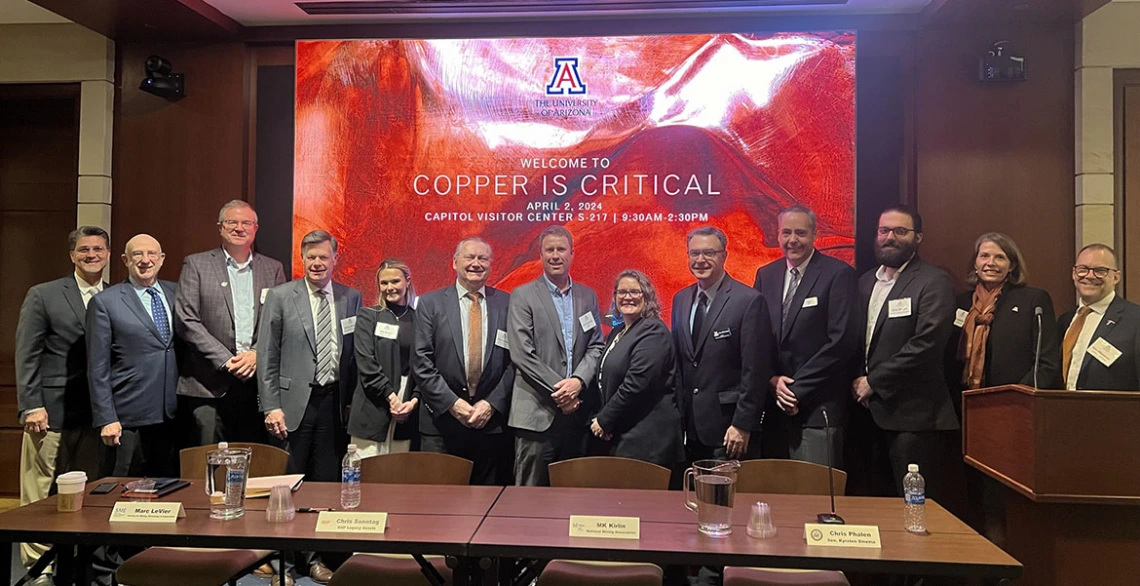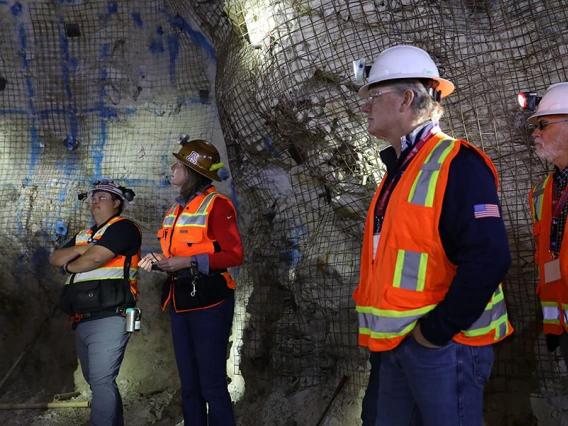Copper Symposium Points a Way Forward for Critical Issues
The University of Arizona contributes with research and education.

Mining, mineral and policy experts gathered on Capitol Hill in April to strategize on copper and construct sustainable solutions in Arizona and nationwide.
Congress is seeking to secure the U.S. critical mineral supply chain and reduce foreign reliance on vital materials. Meanwhile, the University of Arizona is driving novel research to pioneer sustainable mining practices, cultivate the domestic mining workforce, and power the national transition to renewable energy and next-generation defense technology.
Copper is among the most important mineral priorities for Arizona, and three university leaders moderated vigorous discussions at the “Copper is Critical” symposium on Capitol Hill in April: David W. Hahn, the Craig M. Berge Dean of the College of Engineering; Misael Cabrera, director and David and Edith Lowell Chair of the School of Mining and Mineral Resources; and Kray Luxbacher, Greg and Lisa Boyce Leadership Chair and head of the Department of Mining and Geological Engineering.
Leaders from the National Mining Association, the Society for Mining, Metallurgy & Exploration (SME), and other government, industry and academic stakeholders attended.
Equipped to Contribute
Copper ore is Arizona’s second-largest export after aircraft parts, and 70% of the nation’s supply is produced in the state. Despite its importance for producing low-carbon technologies such as electric vehicles, copper is not designated a critical mineral by the U.S. Geological Survey.
The USGS designates 50 minerals as critical. The label is applied to materials like gallium and iridium that are crucial for energy, security, and consumer products like smartphones, and for which there is a future supply risk.
However, copper demand continues to skyrocket, primarily due to high demand for electric vehicles and low-carbon technologies.
Hahn highlighted that in the next 30 years, the U.S. must produce more copper than ever, which would require bringing a new mine online every year. This last occurred in 2021.
“It needs to ramp up, and that requires a significant shift in the public’s understanding of how we can do this work in a safe, sustainable manner,” he said.
In an industry this vast, cooperation, coordination and working across disciplines to meet challenges and goals are essential, Hahn explained.
“One thing we can do at the university, and in academia broadly, is to employ our knowledge and educational base,” he said. “Research and design innovation, as well as workforce development, come to mind immediately as areas where the university is uniquely equipped to contribute.”
Developing the Talent Pipeline
The industry faces a labor shortage. Fewer than 200 engineers graduate from schools accredited in mining and engineering, but the industry has the capacity to hire 600 annually, according to Marc LeVier, 2023 president of SME.
“To produce minerals, we need more mines, but we lack a collective workforce in the U.S.,” said Luxbacher.
As part of its emphasis on producing work-ready graduates to help meet the demand, said Luxbacher, the UA offers a unique teaching and research facility – San Xavier Underground Mining Laboratory.
“We intend use this facility to develop autonomous mining systems underground. In addition, we will build a pilot processing plant to grow our state-of-the-art training center to train skilled workers, engineers and researchers,” Luxbacher said. “The opportunities for hands-on learning here are unparalleled anywhere else in the world.”



